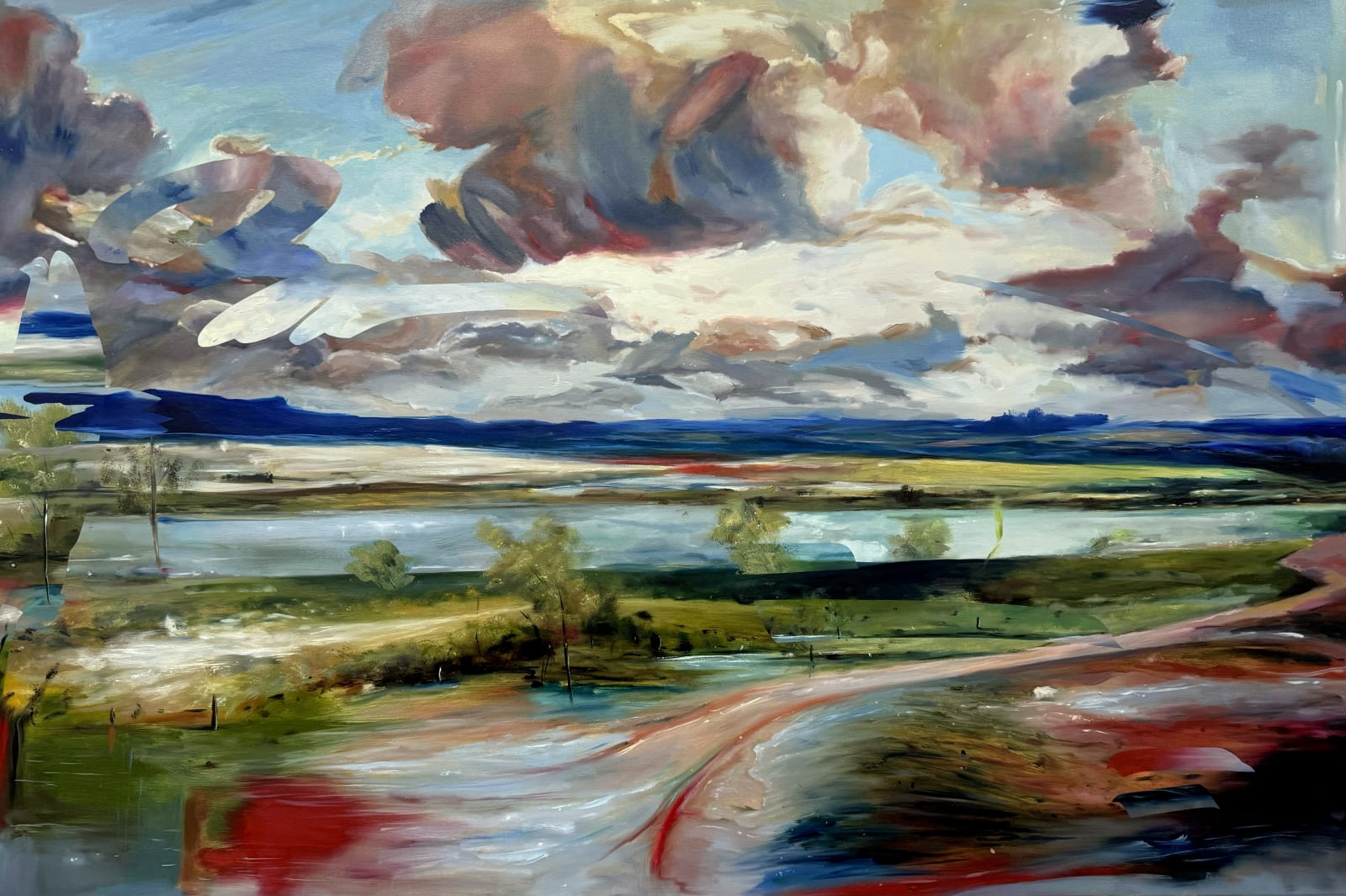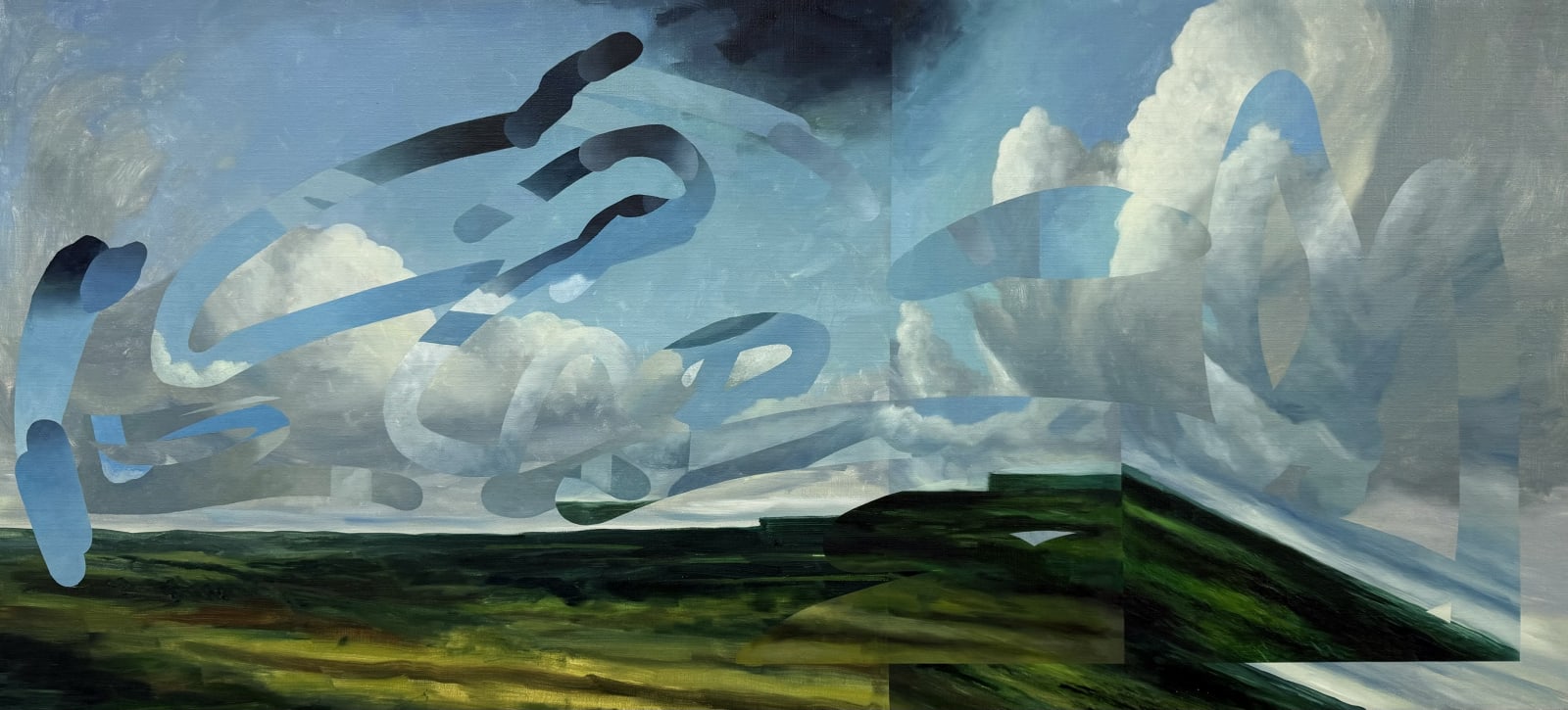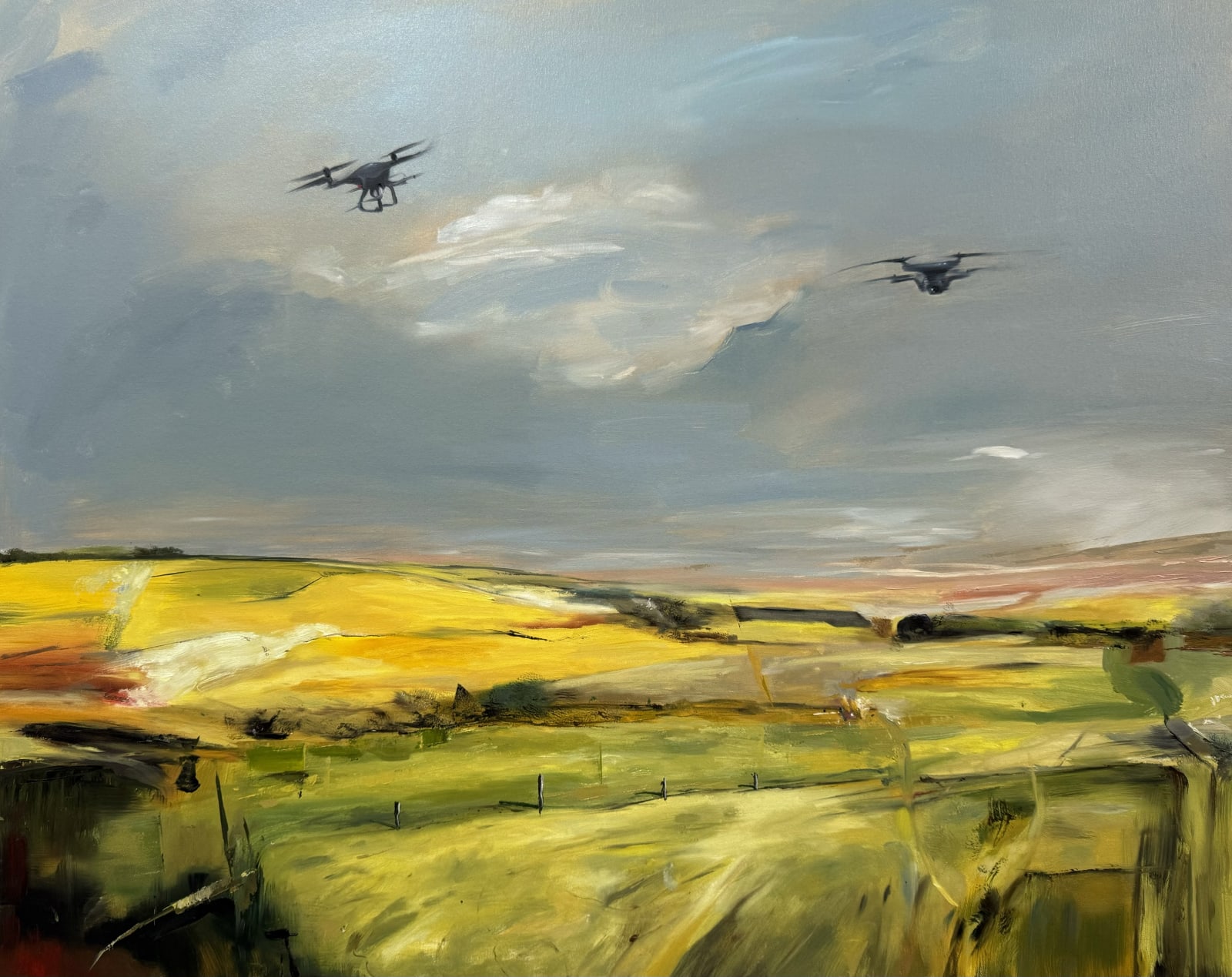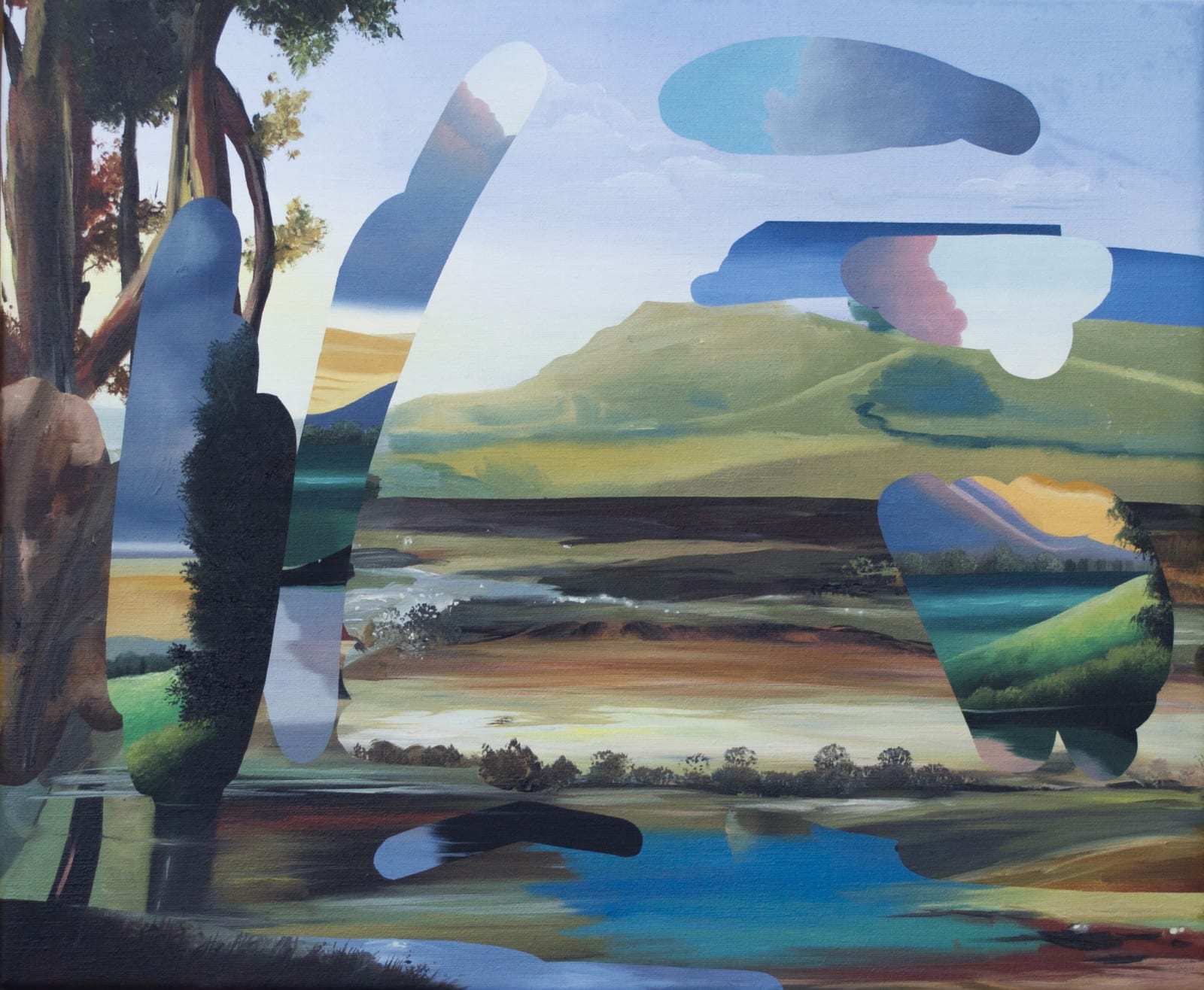MYRNA QUIÑ0NEZ: THE HORIZON PULLED ME CLOSE
"The horizon line functions as more than just a division; it mediates the relationship between land and sea, between the seen and the unseen. It draws attention to an infinite expanse that feels simultaneously vast and intimate, emphasizing a distance that is at once monumental and
minute."
PDF exhibition catalogue of new works
The Horizon Pulled Me Close is the debut London solo exhibition of Mexican artist Myrna Quiñonez, presenting a series of paintings that explore the artist’s own relationship to landscapes both familiar and uncanny. Quiñonez, who studied Fine Arts at Guanajuato University originally hails from the Mexican region of Sinaloa but has been based in Bristol for the past few years. The artist is interested in how our perception of place (regardless of region) is distorted and subverted, whether through the inaccuracy of our memories or the purposeful manipulation of technology and how she might transform traditional subject matter to speak to a 21st-century audience.
Quiñonez revisits places specific to her autobiography, from the River Wye to the seascapes of Cornwall and the landscapes of Los Mochis in Sinaloa, these locations have been disconnected from their origins and blended into imaginary places and spaces. The visual manipulation suggests the transitory nature of our temporal relationship to place but also references the rapid-fire semiotic procession of imagery. The landscapes are as much no place as they are every place, typified by a commonality of "the pastoral" or "the idyll" as popularized through a history of landscape painting. Quiñonez's work isn't cynical, however, and the landscapes here are handled with the same reverence that artists like John Constable and José María Velasco bestowed upon their work. But Quiñonez's deconstruction of the landscape allows for tiny fissures - almost suggesting a disconnect or schizoid comprehension of our natural world. Perhaps a desire to return to nature as much as a reflection of our increasingly fleeting relationship to it: through screens, or as captured through the lens of a smartphone camera.
So too has Quiñonez employed drone photography and Photoshop, then translated through analog painting, to attempt to capture the landscape. The title of the landscape also suggests a desire for further intimacy with the works; almost like an invitation to immerse oneself within the works - particularly in a day when the average museum-goer spends less than two seconds viewing an artwork, Quinonez invites us to stop, if only for a moment longer.
Landscape painting once required the physical act of going out into the countryside, observing, and then translating that onto canvas. And today this same process can be entirely digitally sourced — simulating nature with pixelated precision. These works seem to play upon that understanding and "double-back" upon this transience. Not only is the landscape recaptured by traditional means imbued by technology, but they're frozen, and idealized, almost as an artist's own futile attempt to capture, idealize, and exist within a perfected landscape.
*Note: The exhibition takes its name (verbatim) from a line in Lisa Robertson's book of prose poetry, Xeclogue, (1993); a late-twentieth-century critique of nature through a feminist perspective.
MYRNA QUIÑONEZ (b. 1987, Los Mochis, Sinaloa, Mexico) currently lives and works in Bristol. Quiñonez graduated from Guanajuato University in 2011.
Solo exhibitions include: The Horizon Pulled Me Close, BEERS London, London (2024); The Picturesque, Pound Arts, Corsham, UK (2023); Landscape Synthesis, Cass Art, Bristol, UK (2020); Site, Don Quixote Iconographic Museum, Guanajuato, Mexico (2019); Síntesis de un Trayecto, Galería Dos Topos, Leon, Mexico (2019); El Cine Mexicano de la Época de Oro, Asamblea Legislativa del Distrito Federal, Mexico City, Mexico (2018) and Distance, Gene Byron Museum, Guanajuato, Mexico (2018).
Group exhibitions include: Landscape, Reimagined, Saatchi Gallery, London (2024), South by South West, Burr Johns International, London, UK (2024); Más allá de la Imagen II, Trapo Galería, San Miguel de Allende, Mexico (2023); A Quiet Place, Galería Jesús Gallardo, Teatro Manuel Doblado, Leon, Mexico (2020); Intersections, The Painting Center, New York, USA (2019); Nueve de Guanajuato, Casa Diego Rivera Museum, Guanajuato, Mexico (2019); Maker Heights Collective, The Old Ship, Cornwall, UK (2019); A Quiet Place, Trap Galería, San Miguel de Allende, Mexico (2019); Esto es Ahora, Contemporary Art Auction, Morton Subastas, Mexico City (2019) and Lotería de la Apariencia, Galería Dos Topos, Leon, Mexico (2019).
Fairs include: Contemporary Art Fair, Queretaro, Mexico (2019).



































